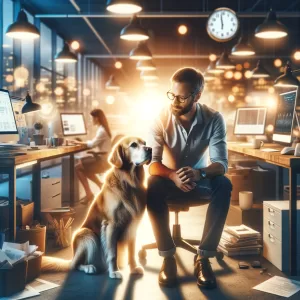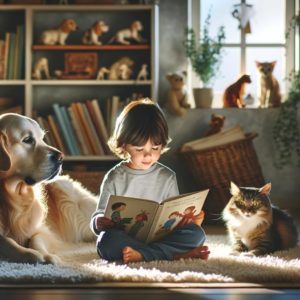The relationship between humans and pets has not only been a source of companionship and joy but has also significantly influenced our language and communication. From idiomatic expressions to the ways we interact with technology, the impact of pets on our linguistic landscape is both profound and pervasive. This blog post delves into various aspects of how pets have shaped language and communication in our culture.
Pets in Idiomatic Expressions and Metaphors
One of the most visible influences of pets on language is seen in idiomatic expressions and metaphors. Phrases like “fighting like cats and dogs,” “barking up the wrong tree,” or “curiosity killed the cat” are ingrained in our daily vocabulary. These expressions not only reflect our observations of pet behavior but also illustrate how deeply animal traits are embedded in human communication, often used to describe complex human emotions and situations.
The Evolution of Pet-Related Vocabulary
As the role of pets in society has evolved, so has the vocabulary we use to describe them. Terms like “pet parent” and “fur baby” signify a shift from pet ownership to a more familial and nurturing relationship. This change in terminology reflects a broader cultural shift in how we perceive and value our relationships with pets, emphasizing a deeper emotional and empathic connection.
Communication with Pets and Its Impact on Human Interaction
The way we communicate with pets has also influenced our interpersonal communication. Talking to pets, often in a higher pitch or baby talk, is not just a way to engage with animals but has been shown to have parallels in how we communicate affection and care in human relationships. This “pet-directed speech” mirrors the “infant-directed speech” used with babies, suggesting a universal way of expressing care and affection.
Pets and Technological Communication
The rise of social media and digital communication has further highlighted the impact of pets on language and communication. Pets have become stars on platforms
like Instagram and YouTube, leading to the creation of pet-centric content, language, and even internet slang. Terms like “doggo” and “blep” have emerged from online pet communities, showing how digital culture and pet ownership intersect to create new forms of expression.
Influence on Literature and Storytelling
Pets have also left their mark on literature and storytelling. Many authors have used pets as central characters or symbols to convey themes of loyalty, sacrifice, and unconditional love. The way these animals are depicted in stories reflects societal attitudes towards pets and often serves to teach moral lessons or explore complex human emotions.
Pets and Non-Verbal Communication
The interaction with pets has enhanced our understanding of non-verbal communication. Since pets do not communicate verbally in the way humans do, pet owners become attuned to body language, tone, and facial expressions. This heightened awareness of non-verbal cues can translate into more empathetic and effective communication with other humans.
Educational and Developmental Impact
For children, growing up with pets can influence language acquisition and cognitive development. Conversations with pets can encourage language use and improve communication skills in young children. Additionally, pets often appear in educational materials and children’s literature, helping to teach language concepts in a relatable and engaging manner.
A Lingual Legacy of Our Furry Friends
The influence of pets on language and communication is a testament to the deep bond between humans and animals. This connection has not only enriched our linguistic expressions but has also shaped the way we interact, both with our pets and with each other. In the endearing paws and whiskers of our pets, we find a reflection of our own humanity, interwoven into the very words we speak and the stories we tell.
Pet Roles in Hustle Culture: A New Paradigm for Success and Well-Being
In recent years, hustle culture has become a pervasive force, driving individuals to pursue success [...]
Feb
Healing Paws and Gentle Whiskers: The Global Tapestry of Pet Therapy
The therapeutic bond shared between humans and animals emerges as a universal thread of healing [...]
Jan
Through the Heart’s Lens: Pop Culture’s Enduring Influence on Our Love for Pets
In the kaleidoscopic world of pop culture, certain moments transcend mere entertainment, weaving into the [...]
Jan
Whiskers and Words: The Influence of Pets on Language and Communication
The relationship between humans and pets has not only been a source of companionship and [...]
Jan
Sacred Companions: The Intersection of Pets and Spirituality in Cultural Narratives
The role of pets and animals often weaves a narrative of divine intervention and sacred [...]
Dec
Beyond Words: How Pets Bridge the Divide of Cultures and Backgrounds
In the colorful mosaic of human cultures and backgrounds, where differences often draw lines and [...]
Dec
Paws on the Pulse: The Endearing Role of Pets in Pop Culture
In the vibrant tapestry of popular culture, pets have carved out a unique and endearing [...]
Dec
Animals in Puppetry and Mask Performances
In the world of performance art, animals have not only inspired characters but have also [...]
Nov








